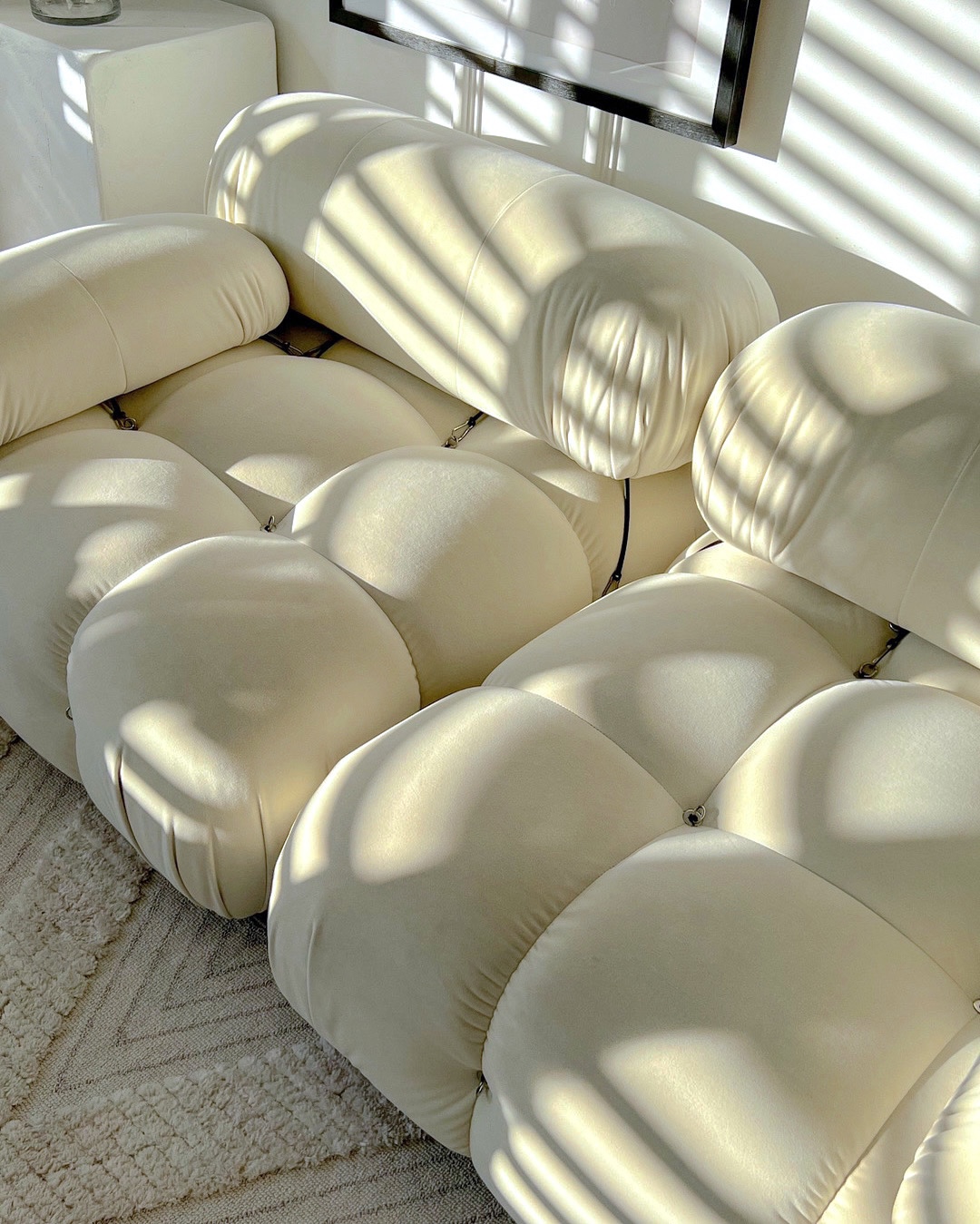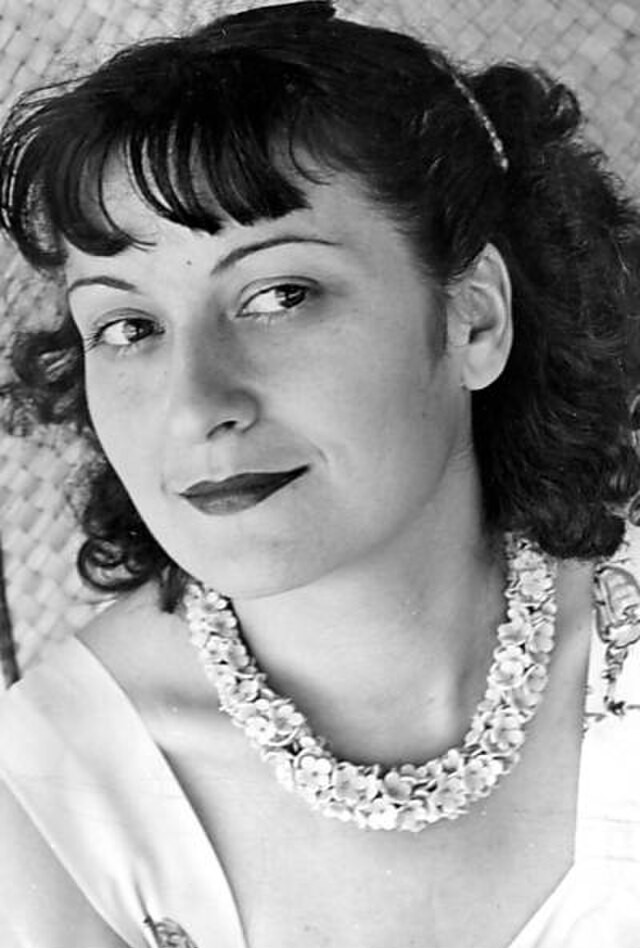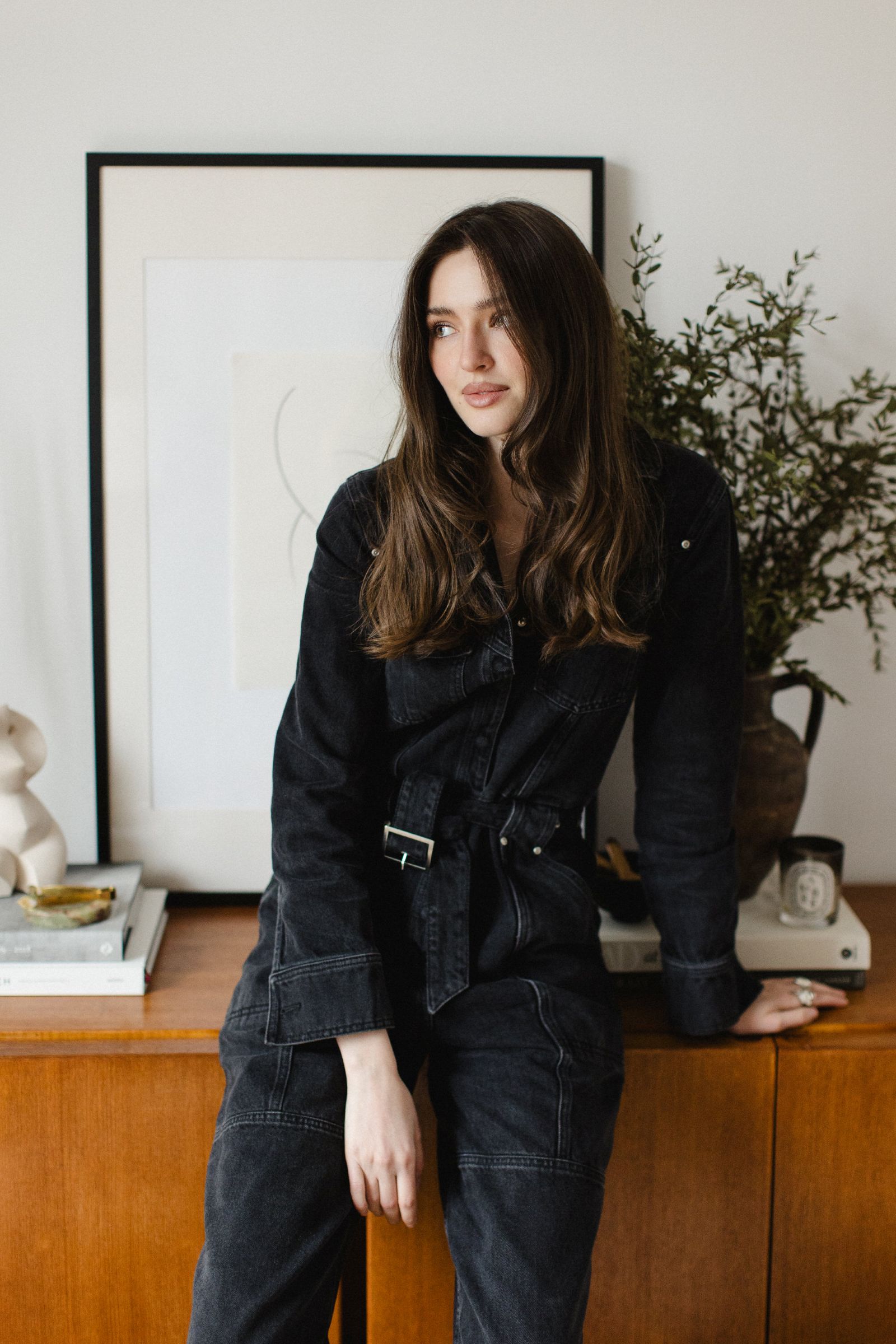
Dorothy Draper
Photo by Edward Lynch, New York World-Telegram and the Sun Newspaper, via Library of Congress (Public Domain).
In the annals of American design, where the prevailing winds once whispered of muted tones and polite restraint, Dorothy Draper emerged as a veritable tempest, a force of nature adorned in vibrant hues and striking patterns. Her aesthetic, a flamboyant declaration against the staid sensibilities of the early 20th century, was not merely a style; it was a grand gesture, a theatrical performance staged across the very fabric of American interiors. Draper’s pioneering spirit and her singular vision, christened “Modern Baroque,” ushered in an era where spaces ceased to be mere backdrops and became, instead, living, breathing expressions of joy, drama, and unapologetic glamour.
The Unveiling: A Design Maverick’s Debut
The dawn of the 20th century in American interior design was largely characterised by a restrained adherence to tradition. Trends often gravitated towards simplicity or rigidly followed “period room” styles, resulting in interiors frequently described as gloomy or drab. Decorating, if considered at all beyond the domestic sphere, was rarely viewed as a serious profession, particularly for women. This pervasive aesthetic of minimalism and historical fidelity inadvertently created a void, a stage awaiting a revolutionary act. It was into this quietude that Dorothy Draper made her bold entrance, not merely as a designer, but as a cultural provocateur, challenging the established norms with a vibrant, anti-minimalist stance that was both a stylistic preference and a defiant artistic statement.
Born Dorothy Tuckerman in 1889, her origins were steeped in the rarefied air of Tuxedo Park, New York, a community synonymous with exclusivity and privilege. Her early life, marked by home education under a governess and extensive European tours, provided an informal yet formative immersion in art and architecture, shaping her emerging design sensibilities. This aristocratic provenance, far from constraining her to societal expectations, imbued her with a singular authority that emboldened her to dismantle established conventions. The confidence derived from her upbringing allowed her to navigate and ultimately disrupt a male-dominated field, paving the way for her groundbreaking career.
Her initial forays into design began organically, transforming the homes she shared with her husband, Dr. George Draper, whom she married in 1912. These personal projects, infused with her burgeoning flair for the dramatic, quickly captured the attention of her influential social circle, including luminaries like Mrs. Potter Palmer and Mrs. Rockefeller. Encouraged by this high-society endorsement, she founded Architectural Clearing House in 1925, a venture widely considered the first official interior design business in the United States. This was a truly revolutionary act for a woman of her social standing at a time when professional pursuits for women were largely unheard of.
The very nomenclature of her burgeoning style, “Modern Baroque,” signalled a deliberate act of stylistic synthesis, not merely an evolution. It represented a conscious effort to bridge historical grandeur with contemporary dynamism, creating a new design language that was both accessible and aspirational. This fusion, characterised by contrasting colour combinations, elements larger than life, and the contrast of patterns, added a modern flair to a classical style. It was a style that would ultimately define the “Hollywood Regency” aesthetic, demonstrating a broader cultural impact beyond her immediate projects. This aesthetic offered a much-needed visual escape and a sense of optimism during the challenging years of the Great Depression, positioning her work as a form of cultural intervention.
The Architect of Joy: Draper’s Life and Vision
Dorothy Draper’s journey from the privileged enclaves of Tuxedo Park to the vanguard of professional design was a testament to her innate talent and unwavering conviction. Though her formal education was primarily conducted at home by a governess, with a brief period at the Brearley School, it was her extensive travels through Europe that truly informed and sharpened her keen design eye. This exposure to classical architecture and design laid the foundation for her revolutionary style. Her self-taught path, coupled with a natural confidence derived from her upbringing, allowed her to bypass traditional academic constraints. This freedom from conventional design strictures explains why her approach was so unheard of and revolutionary, enabling her to throw all conventional rules out the window. This narrative paints her as an intuitive genius, a maverick unburdened by established norms.
In 1925, her establishment of Architectural Clearing House, later renamed Dorothy Draper and Company in 1929, was a pivotal moment. This act professionalised the interior design industry, transforming it into a legitimate career path for women. Draper faced considerable challenges as a woman operating in a predominantly male-dominated field, often struggling to be taken seriously and encountering discrimination and sexism. Yet, her perseverance was unwavering. Her entrepreneurial venture was more than a business success; it was a strong act of agency that reshaped societal expectations for women in the professional sphere. Her firm became a beacon of empowerment for subsequent generations of female designers, demonstrating that the notion of “women simply did not work” was a convention ripe for shattering.
Central to Draper’s bold approach was her unwavering confidence and a design philosophy encapsulated in her mantra: “If it looks right, it is right.” She held a firm conviction that “Lovely, clear colours have a vital effect on our mental happiness.” She encouraged her clients to “make their homes bigger, brighter, and friendlier” and, crucially, to embrace their “own individual style.” Her famous declaration, “I always put in one controversial item. It makes people talk,” underscored her playful yet deliberate intent to provoke conversation and challenge complacency. This design philosophy was rooted in an intuitive, almost visceral, understanding of aesthetics and human psychology, rather than rigid rules. Her emphasis on “happiness” and “fun” suggested a therapeutic dimension to her work, transforming spaces into environments that uplifted the spirit, particularly relevant during the somber years of the Depression.
The Draper Touch: A Symphony of Scale, Colour, and Pattern
The essence of “Modern Baroque” lay in its bold fusion of classical grandeur with a modern verve. Draper’s style was a unique blend of traditional aspects of design and incorporated modernity into it, combining rococo scrollwork, and baroque plasterwork with a distinct modern flair. This fusion was not merely eclectic; it was a deliberate act of breaking away from the traditional tastes and period room styles, creating a dynamic tension that felt both familiar and startlingly new. This bold approach allowed her to redefine luxury for a modern American sensibility, moving beyond mere imitation to create something truly original.
Draper’s use of colour transcended simple aesthetics, becoming a psychological strategy to uplift and create happiness. She dramatically departed from the dark colour schemes of the usual Victorian-inspired decor, embracing bright, exuberant colours that were a direct counterpoint to the prevailing gloom. Her signature combinations included stark black with white and adding in some bits of colour, as well as vibrant pairings like green and red with coral, and aubergine and pink with a splash of chartreuse and a touch of turquoise blue. She famously promoted shiny black ceilings, acid-green woodwork and cherry-red floors. The turquoise lobby of the Hampshire House stands as a testament to her confident use of intense colour. She even lent her bold vision to the masses, reportedly suggesting the now-famous orange and blue scheme for Howard Johnson’s. These bold contrasts were not just visually arresting; they created a sense of dynamic energy, a zest for life, directly combating the somber mood of the era.
The dance of patterns was another key theatrical device in Draper’s repertoire, creating visual dynamism and preventing monotony. She employed large prints that encompassed whole walls. Her trademark cabbage-rose chintz, often paired with bold stripes, became instantly recognisable. The iconic black and white checkerboard floors, notably seen in the Hampshire House lobby, were a signature element that provided a dramatic foundation for her vibrant schemes. She masterfully mixed different fabrics and patterns, combining stripes with florals to achieve a layered, opulent effect. The oversized nature of these patterns amplified their impact, making spaces feel grander and more immersive, a direct and deliberate counterpoint to the prevailing minimalism. This visual abundance ensured that every surface contributed to the overall drama.
Draper’s strategic use of oversized elements and mirrors was a masterclass in manipulating perception, transforming ordinary spaces into fantastical realms. She often used large, oversized details and numerous mirrors. Examples included huge mantels, ornate mouldings, enormous scroll-and-shell bas-reliefs, floral swags and multi-arm chandeliers, and massive, panelled, lacquered doors. Mirrors were strategically employed to make rooms look larger or wider, while her distinctive birdcage chandeliers became iconic symbols of her style. This was not merely about achieving grandeur; it was about creating an immersive effect and a sense of wonderland, turning interior design into a form of stagecraft where scale became a powerful tool for dramatic storytelling.
Grand Stages: Draper’s Iconic Commissions
Draper’s preference for public spaces was a strategic choice; these grand canvases allowed her “Modern Baroque” style to flourish without the constraints of individual client tastes. Her designs became a powerful marketing feature, offering glamour and star quality that businesses actively sought to attract customers, especially during the challenging economic climate of the Great Depression.
Her career truly soared with commissions to transform public spaces. Her redecoration of The Carlyle Hotel in New York in the early 1930s marked her first major break and established her as America’s premier hotel designer. For the Hampshire House apartment hotel in 1937, she conceived a top-to-bottom decorative scheme, featuring a bold black and white checkerboard floor, a thick glass Art Deco mantelpiece surround, Victorian-style wing chairs, and neo-Baroque plaster decorations. Her inventive use of sliding glass doors rather than shower curtains was particularly noted. Beyond hotels, she transformed a block of former tenement homes in Sutton Place by painting them black with white trim and adding vibrant, colourful doors, turning them into highly sought-after luxury apartments.
The redecoration of The Greenbrier Hotel in White Sulphur Springs, West Virginia, between 1946 and 1948, stands as the pinnacle of her career and is widely considered her masterwork. This monumental undertaking, dubbed “Draperisation,” transformed a former military hospital into a vibrant, lively hotel. Her meticulous control extended to every minute detail, from the matchboxes to the staff uniforms, creating a seamless, theatrical wonderland that transcended mere decoration to become a complete sensory experience. The sheer scale of the project was staggering, requiring 45,000 yards of fabric, 15,000 rolls of wallpaper, and 40,000 gallons of paint for over 600 guestrooms and all public areas, completed in a mere 16 months.
Within The Greenbrier, specific rooms became legendary for their theatricality:
- The Victorian Writing Room, one of her most iconic spaces, was once hailed as the most photographed room in America. It features an antique marble mantel flanked by pairs of wing chairs, scalloped tables, and Asian tea-canister lamps.
- The Pink Ballroom was ingeniously designed to cast a flattering glow on women’s faces, a subtle yet impactful theatrical effect.
- The Blue Room featured busts of United States presidents’ heads, some of which Draper, ever the perfectionist, modified to appear more handsome, injecting a playful, almost mischievous, touch.
- The Lobby confidently employed a vibrant turquoise.
- The Fountain Room was rendered in chartreuse and white, with a ceiling swept into a Gothic arch to evoke the effect of a pavilion.
- The Soda Fountain featured oversized plaster shells and sconces, turning a casual space into a dramatic statement.
- The Draper Suites themselves serve as a living homage to her style, adorned with vivid hues, exquisite florals, and striking contrasts.
This holistic approach to design, encompassing every detail, foreshadowed modern branding and experiential design, making The Greenbrier a living museum of Draper.
Draper’s influence extended far beyond hospitality. Her diversification into industrial design saw her creating automobile interiors for Packard and Chrysler in the 1950s, famously including a “pink polka dot truck.” She even designed airliner interiors, notably for the Convair 880. In 1954, she designed the cafeteria at the Metropolitan Museum of Art, affectionately nicknamed “The Dorotheum,” a space featuring birdcage chandeliers and a skylighted canopy that transformed a mundane setting into an extraordinary environment. These ventures demonstrated the versatility and universal appeal of her “Modern Baroque” aesthetic, proving that her signature glamour could elevate even the most utilitarian spaces, making high style accessible beyond the elite.
A Legacy in Full Bloom: Impact and Lasting Influence
Dorothy Draper’s impact reverberated far beyond the individual projects she undertook. She was one of the first professional interior designers in the United States and helped establish the profession as a serious field. Her pioneering spirit transformed the concept of “design” by breaking away from the historical “period room” styles that had long dominated the industry. Her entrepreneurial spirit and keen business acumen were instrumental in breaking down barriers and challenging stereotypes, paving the way for future generations of women in design. Her professionalisation of interior design was not merely about establishing a business model; it was a substantial act of legitimising a creative field and, crucially, making it a viable and respected career for women. This ripple effect transformed the industry’s gender landscape, making her a true beacon of empowerment for generations to come.
During the challenging years of the Great Depression, Draper’s designs served a vital psychological and social function beyond mere aesthetics. Her theatrical style offered exactly the kind of escapism people craved. Her bright and optimistic creations were the perfect antidote to the economic and social challenges of the era. This significant effect stemmed from her unwavering belief that “colour has a vital effect on our mental happiness.” Her designs, therefore, were not just visually appealing; they were a form of optimistic legacy, providing a much-needed visual balm and a sense of joy and luxury in times of widespread hardship. This positions her as a designer who intuitively understood and responded to the emotional needs of her audience.
While Dorothy Draper’s immediate influence was concentrated within the American sphere, her “Modern Baroque” aesthetic, disseminated through her publications and the widespread media coverage of her projects, resonated globally. In Australia, where design trends often followed British and American lead, her bold use of colour, grand scale, and theatricality would have certainly caught the eye of avant-garde decorators and those seeking a departure from more conventional, conservative styles. While not a direct, overt replication, the spirit of her anti-minimalist approach and the embrace of a more vibrant, expressive interior certainly found echoes in Australian homes and public spaces, particularly from the mid-20th century onwards as international design became more accessible. Today, with the global embrace of maximalism and a renewed appreciation for heritage glamour, her influence is arguably more discernible, inspiring Australian designers to infuse spaces with personality, drama, and a fearless celebration of colour and pattern.
Draper’s lasting imprint is evident in the continued relevance of her philosophy and her influence on contemporary design. Her work remains influential today. She is widely regarded as a major influence on several modern designers, including Kelly Wearstler and Jonathan Adler, who continue to push the boundaries of interior design. Her company, Dorothy Draper & Company, continues as America’s oldest, continually operating interior design firm, carrying on her legacy under the direction of Carleton Varney and his successors. Her fearless approach to colour and pattern continues to inspire designers seeking to make a bold statement. Draper’s legacy extends beyond her specific designs to a broader philosophical influence, particularly in the resurgence of maximalism. Her work is not merely historical; it is a living, evolving inspiration that challenges contemporary designers to embrace risk-taking and individualistic design and to prioritise joy and personality over conformity.
Dorothy Draper’s Timeless Theatricality
Dorothy Draper, a visionary designer, truly transformed the world of interior design. From 1925 to 1960, she reigned as the most influential tastemaker in America. Her life and work stand as a striking testament to the power of creativity, perseverance, and an utterly fearless approach to design and style. Her impact was not merely stylistic; it was a cultural revolution that made high design accessible and professionalised a burgeoning industry, particularly for women. Her bold pursuit of beauty and joy, even in the face of challenging times, established a new paradigm for how spaces could strongly shape human experience.
The lasting appeal of Draper’s “grand gestures” lies in their inherent theatricality—their unparalleled ability to transport, delight, and inspire a sense of wonder. The “larger-than-life feeling” she meticulously crafted remains cherished and relevant today. Her work consistently created environments that evoke emotion and tell a story. This rich emotional resonance is precisely what renders her work timeless, proving definitively that design, at its most intense, is a captivating performance art, capable of shaping our moods, our memories, and indeed, the very narrative of our lives. Dorothy Draper’s stage continues to captivate, her grand gestures echoing through the most vibrant interiors of our time.
Further Reading
Draper, Dorothy. Decorating Is Fun!: How to Be Your Own Decorator. Shannongrove Press, 2017.
Draper, Dorothy. Entertaining Is Fun!: How to Be a Popular Hostess. Shannongrove Press, 2016.
Varney, Carleton. The Draper Touch: The High Life and Art of Dorothy Draper. Shannongrove Press, 2002.
Varney, Carleton. Romance and Rhododendrons: My Love Affair with America’s Resort – The Greenbrier. Shannongrove Press, 2020.
Maas, Stephen. Dorothy Draper: The Modern Baroque. Rizzoli, 2021.


